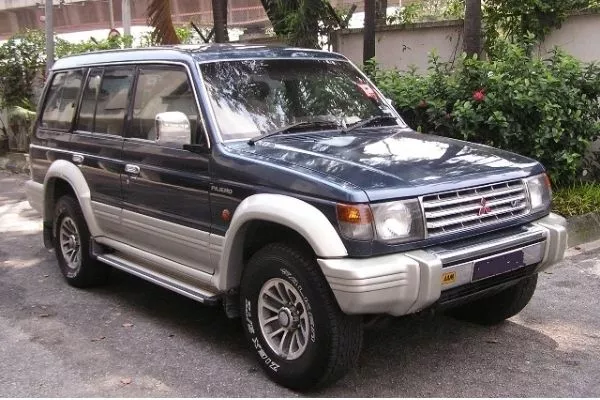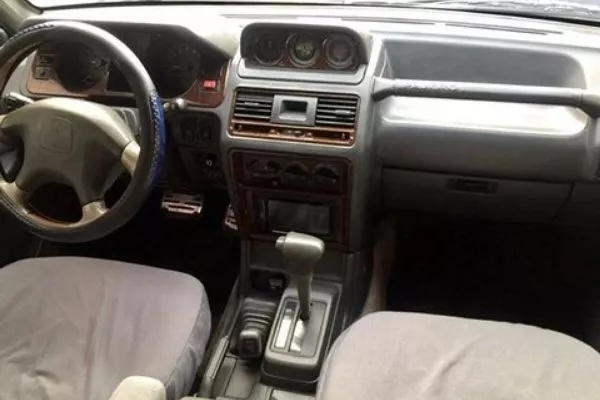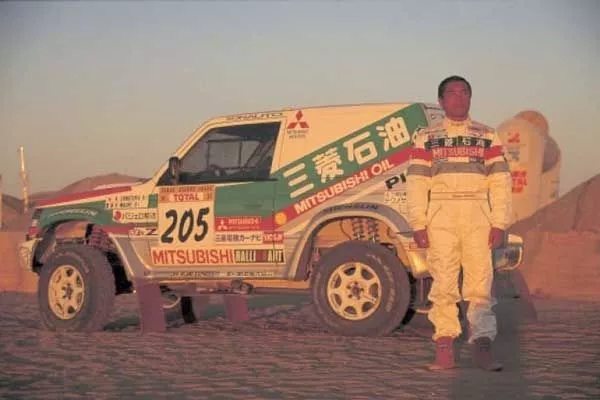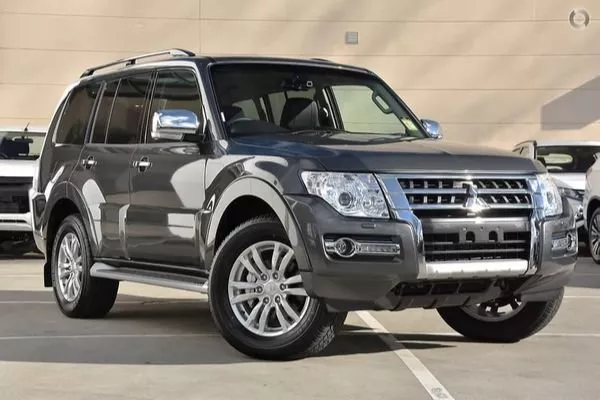Sold from 1995 to 2008 here in the Philippines, the 2nd-generation Mitsubishi Pajero was definitely one of the most iconic SUVs ever made. If you lived through the 1990s, almost everyone wanted one. To this day though, despite the presence of a newer version, many still prefer to keep their old V20 Pajeros running. Now, why is that? What made the old Pajero “Fieldmaster” so great?
Mitsubishi Pajero Fieldmaster: It put Mitsubishi on the SUV map
In the 1990s, Mitsubishi Motors was an absolute giant. The Japanese carmaker was selling the Lancer, which dominated the econo-car market. And there’s also the Lancer Evolution, which to this day, is drooled over by car enthusiasts. At that time, however, no other vehicle gained so much popularity here in the Philippines than the Mitsubishi Pajero Fieldmaster. You want to know why? Well, it just struck both ends of the spectrum when it comes to buying a vehicle. It was tough and capable while being luxurious.

The 2nd-gen lost the sharp corners of the 1st-gen versions
The Pajero Fieldmaster and the 2nd-gen Pajero in general were utilitarian and uncompromisingly tough. Its body-on-frame chassis allowed for that. For the off-roading part, the 2nd-gen Pajero also got the Super Select four-wheel-drive system (SS4). Now this component was hugely important for the Pajero because it was the first-ever 4WD system to mix the characteristics of a full-time 4WD and part-time 4WD. If you want to go off-road, just switch to full-time 4WD.
No-fuss, no muss. Remember that on older 4WD vehicles, you had to step out of the vehicle to manually transfer between drive modes. Sure, Jeep introduced the Quadra Trac in 1973, but that was a full-time only drive.
Some variants of the 2nd-gen Pajero even got electronic shock absorbers and a limited-slip-differential as factory options. Couple that with the Pajero’s bulletproof 2.5-liter and 2.8-liter engine options, and what you have is a vehicle that can go anywhere. The 2.8-liter version was particularly notable for being able to dish out 298 Nm of torque at a very low 2000 rpm, which was impressive at that time.

Behold the 2nd-gen Pajero's luxurious 1990's interior
On the other end of the spectrum, the Mitsubishi Pajero Fieldmaster was also a luxurious vehicle. As such, it became the car to get to let the world know that you made it in life. Sure, it was pricier than your run of the mill sedan or even other SUVs, but the Pajero Fieldmaster simply had more features. It had rear vents for its air-conditioning, faux-wood panels, a lot of cup holders, a six-disc CD changer, leather seats, and anti-lock braking. Most of all, it provided a kingly driving position that sat above most car models at that time. It could also fit in 10 people so it was a sensible family chariot too.
>>> Related: Mitsubishi Pajero 2020 Philippines Review: Prediction based on Australian version
Mitsubishi Pajero Fieldmaster: Dakar Rally domination
If you know the Dakar rally’s history, then you’ll know that the Pajero won it 12 times in a span of 22 years, which is from 1985 to 2004. No other vehicle or Manufacturer has done that, and it is likely that no other will for the foreseeable future.

The victorious Ken Shinozuka with his Dakar-spec Pajero at the 1997 Dakar Rally
Mitsubishi of course, knew what it was doing when it was entering the Pajero in the Dakar. It was a way after all, of promoting what the company dubbed as the “ultimate off-roading vehicle.” Guess what, it worked.
Mitsubishi Pajero: The Pajero Evolution
While we’re mainly talking about the Pajero Fieldmaster, we really have to mention the Pajero Evolution. This is because this Dakar rally homologation model was the cream of the crop when it came to the 2nd-gen Pajero. It was small, but like its larger brothers, the 2-door Pajero Evolution came with SS4. Unlike the regular 2nd-gen Pajero however, this version came with a double-wishbone front and multi-link rear suspension, a hood scoop, fin roof spoilers, and front and rear Torsen differentials. On top of those unique features, its 3.5-liter DOHC V6 engine was incredible. It made 260 horsepower and 324 Nm of torque.

The Mitsubishi Pajero Evolution
As such, the Pajero Evolution paved the way for even more Dakar victories. In 2001, the Pajero Evolution aided Jutta Kleinschmidt to become the one and only woman to win the Dakar Rally.
The Future of the Pajero
Just like many good things, it has been announced by Mitsubishi in August 2020 that the production of the current Pajero will be discontinued in 2021. The Japanese car company also confirmed that the dedicated Pajero manufacturing plant will close down in 2023. According to Mitsubishi, this is due to declining production output.

The 4th-gen Pajero still kicks butt
On a more optimistic note, many 2nd-gen Pajeros can still be seen running around the Philippines. There’s even a decent number being sold in the used car market, with many still in decent shape. Also, the current fourth-generation version is still available from Mitsubishi Philippines.
Do you miss the Mitsubishi Pajero Fieldmaster? Would you want to drive one or own one? For more nostalgic articles like this, keep reading here on Philkotse.com.
Know more about Mitsubishi Pajero 2025

The Pajero is at the top of the rally racing legend Mitsubishi Philippines' SUV range. It is a true off-roader that commands a strong cult following both locally and globally. The Mitsubishi Pajero is a favorite among car buyers and car enthusiasts who want style, adventure, and power in one package. The new Pajero comes in a bolder and more premium look. The front end of the vehicle features a new bumper integrated chrome grille as well as a more aggressive front bumper with LED daytime running lamps. The SUV's muscular styling is complemented by the new twin-6-spoke 18-inch alloy wheels with 265/60 R18 tires. The rear part of the SUV gets a redesigned 5th door. The spare tire carrier also receives a more integrated redesign. It now features a new power sunroof, which comes as a standard. The interior also received several styling updates, including piano-black accents and new silver and carbon fiber trim that gives off an elegant feel. The steering wheel of the Mitsubishi Pajero also comes with audio controls the DVD/MP3 player that transmits sounds via six speakers. Mitsubishi Philippines offers the Mitsubishi Pajero in 3.2L diesel engine, in-line 4-cylinder 16-valve DOHC. Some of the standard features available in this SUV are airbags, ABS with EBD, alarm, rear parking sensors, and immobilizers.
Discontinued
ExploreRecent posts
- Honda CR-V history Jun 07, 2021
- Daihatsu Charade Sep 19, 2022
- Mitsubishi L300 Versa Van Oct 22, 2020
- Toyota Corolla E90 Apr 08, 2021
- List of all Mitsubishi SUVs in the Philippines: Price list with Brief review Oct 28, 2022
















